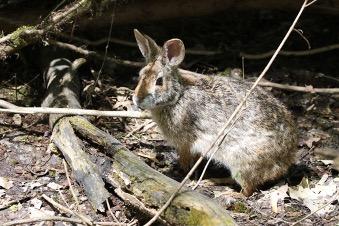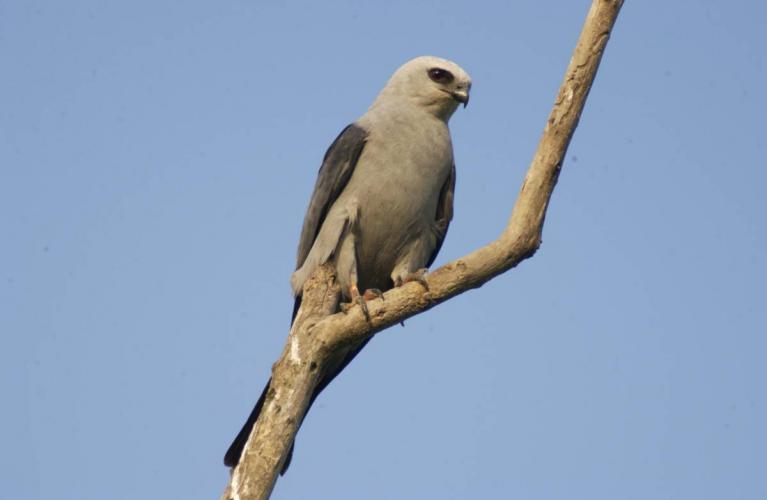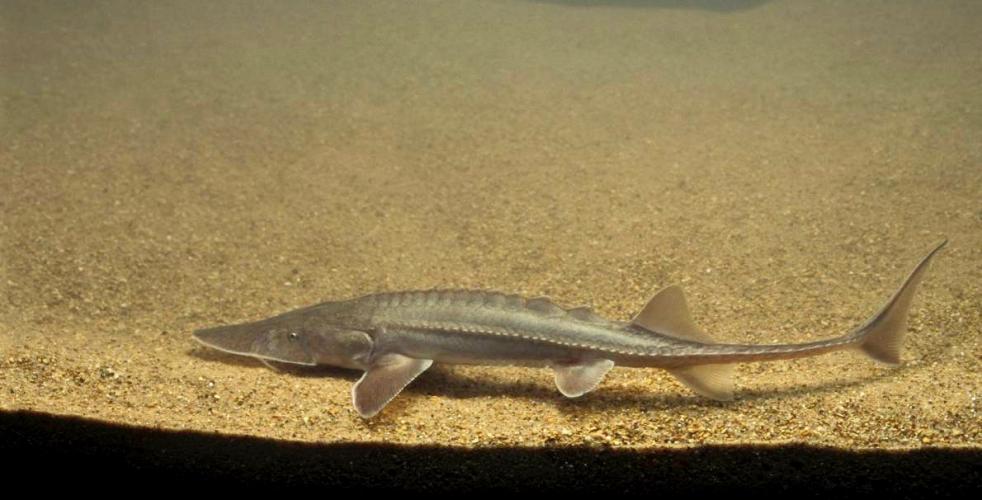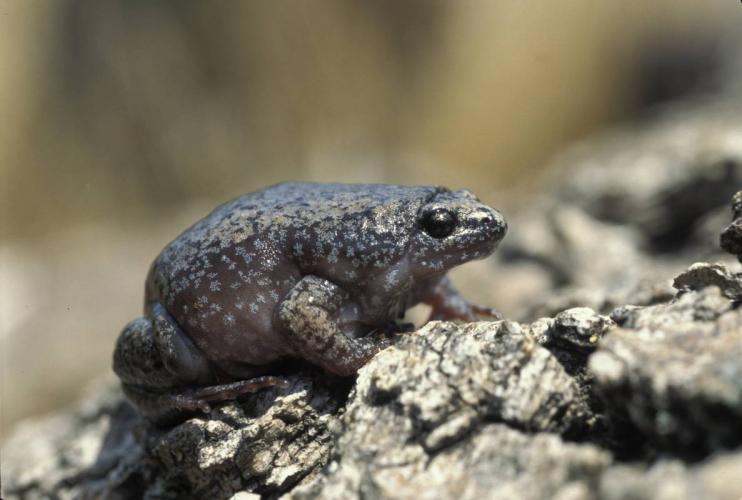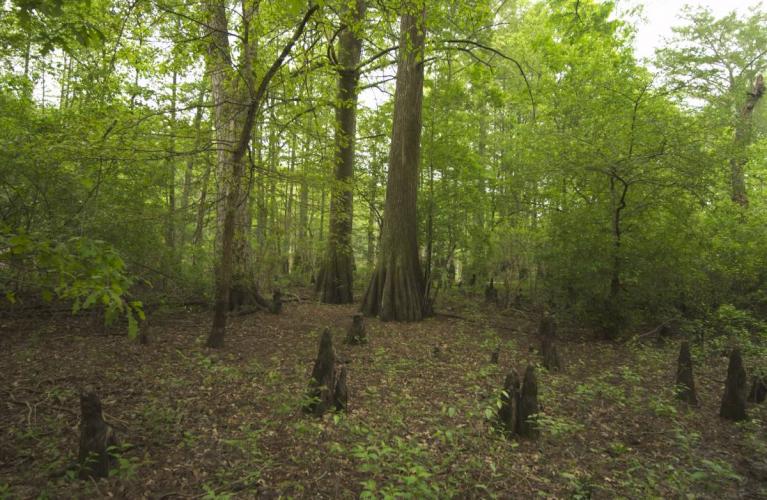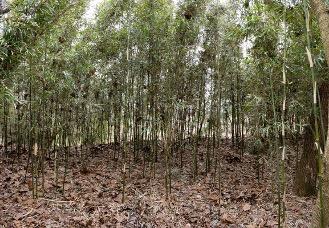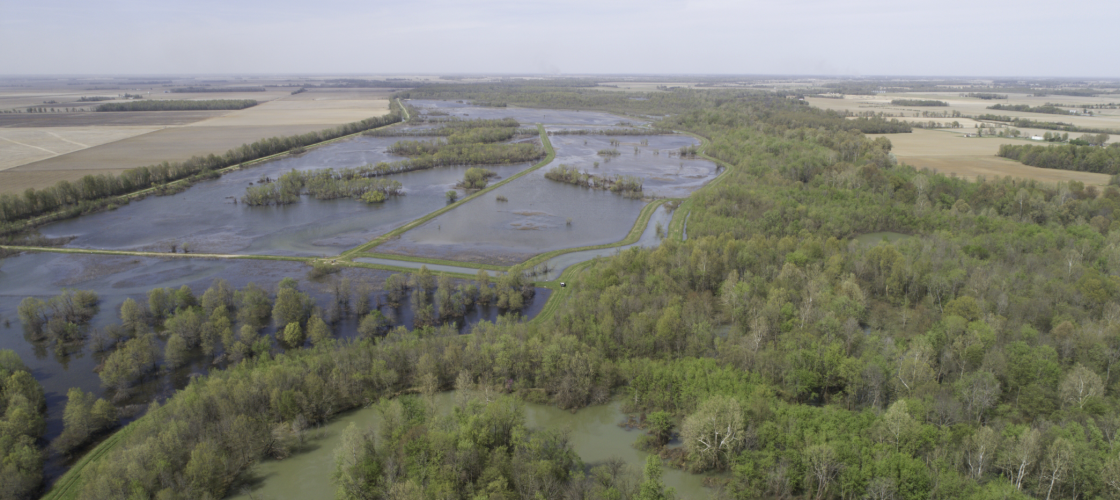The River Bends Priority Geography is the best example of healthy bottomland forest and wetland floodplains along the Mississippi River in Missouri. The lack of man-made water diversions and the area’s direct connection to the Mississippi River make it ideal for habitat conservation. Rare and declining natural communities include riverfront forest, swamp, wet bottomland forest, wet-mesic bottomland forest, oxbows/sloughs, and shrub swamp.
The area supports many species and communities listed as threatened or endangered at either the state or federal level. It also serves as an important stopover for numerous species of migrant songbirds and thousands of waterfowl and other wetland birds during fall and spring migrations.
Within this landscape, remnant bottomland forests and wetlands on public land serve as anchor points for conservation efforts and also provide outdoor opportunities for the public. Ongoing collaborations between MDC, conservation partners, and private landowners have already resulted in vast improvements to both habitat and working lands in this region.
The area encompasses 152,798 acres (20,279 acres of public land and 132,519 acres of private land). As of now, 19,087 acres are enrolled in WREP (Wetland Reserve Enhancement Program, part of the Farm Bill). You can visit Ten Mile Pond, Donaldson Point, and Black Island conservation areas to see examples of managed habitats such as wetlands, bottomland forests, and river systems.
Contact our Southeast Regional Office to speak with a member of our dedicated team.
MDC staff can provide:
- Cost-share information
- Lists of contractors
- Technical expertise for wetland and bottomland forest restoration and enhancement
- Guidance for timber sale administration
- Technical advice for sustainably growing and harvesting timber
- Step-by-step recommendations for improving wildlife habitat
Title
What Conservation Practices Could Benefit Me?
MDC aims to find common sense solutions to meet the goals of local landowners while balancing the needs of nature. Our staff and partners will work with you to create a program that fits your property goals with conservation practices that are right for you. In River Bends, these practices may include:
- Timber stand improvement and other forest management
- Streambank stabilization
- Wetland and bottomland restoration and enhancement
- Invasive species removal
- Fish and wildlife habitat enhancements
Title
How Will The Area Benefit From Conservation Efforts?
- Improved water quality
- Reduced soil erosion
- Improved wetland connectivity
- Healthier wetlands and forests on both public and private land
- Increased aesthetics and public recreation opportunities
- More resources for many species of wildlife
Title
What Species Will Be Helped?
While habitat improvement will benefit all species, key species and species of greatest concern in the River Bends region include:
- Birds: Interior least tern**, Swainson’s warbler*, loggerhead shrikeC, Mississippi kiteC, wild turkey, summer tanager, pileated woodpecker, red-headed woodpecker, whip-poor-will, Louisiana waterthrush, prairie warbler, blue-winged warbler
- Amphibians: eastern spadefoot toadC, Illinois chorus frogC, wood frogC, ringed salamanderC, four-toed salamanderC, eastern narrow-mouthed toad, spotted salamander, marbled salamander
- Reptiles: alligator snapping turtleC, prairie lizard, three-toed box turtle, broad-head skink, red milk snake
- Mammals: Rafinesque’s big-eared batC, southeastern batC, Indiana bat, cotton mouseC, rice ratC, swamp rabbitC, white-tailed deer
- Insects and arachnids: bald cypress katydidC, Hoosier grasshopperC, native bees, striped bark scorpion, Texas brown tarantula
- Mussels and crayfish: yellow sandshell, white heelsplitter, mapleleaf, painted devil crayfishC, Shufeldt’s dwarf crayfishC
- Fish: pallid sturgeon**, cypress minnow*, taillight shiner*, ironcolor shinerC, harlequin darterC, pugnose minnowC, swamp darterC, alligator garC, blacknose shiner, Ozark minnow, red shiner, rainbow darter, common shiner
- Plants: Goldie’s fernC, fir clubmossC, sullivantiaC, prairie dandelion, yellow false marrowC, glade coneflower, rough blazing star, Missouri primrose, asters, oaks, hickories
C = species of conservation concern, * = state endangered, ** = federally endangered

